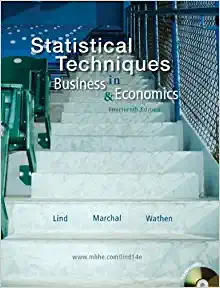Question
Information: Case Study - Schools of Thought in Context: South Korea and Argentina - South Korea and Argentina are reasonably well matched for a comparison:
Information:
Case Study - Schools of Thought in Context: South Korea and Argentina - South Korea and Argentina are reasonably well matched for a comparison: moth are midsize in population, and both were long classified as middle-income countries - but now S. Korea is a high-income country, and has almost double the per capita income of Argentina - can the four classic approaches to development explain this reversal?
South Korea
Stages of Growth - S. Korea confirms some linear-stage views, but in a limited way
- its share of investment in national income has been among the highest in the world, and this is a crucial part in the explanation of the nation's rapid ascent - but S. Korea does seem to epitomize Rostow's notion of an economy in the midst of a "drive to maturity", and soon will enter the "age of mass consumption"
- Rostow claims that maturity comes 60 years after takeoff begins
- S. Korea definitely meets the 'maturity' criterion of becoming integrated with the world economy
Structural Patterns
- S. Korea also confirms some patterns-of-development structural-change models over the past generation S. Korea
- has seen rapidly increasing agricultural productivity, shifts from labour agriculture to industry, the steady growth of the capital stock of education and skills, and the demographic transition from high to low fertility, all while per capita income grew -
all this confirms the Lewis model of development
Dependence Revolution
- S. Korea poses a serious challenge to dependence revolution models
- S. Korea used to be dependent on (a colony of) Japan, then it was dependent on the US as an ally against North Korea
- the shape of the nation's development was this conditioned in large part by export opportunities to developed countries, and dependence theory predicts that a lagging in development should result - but this didn't happen!
Neoclassical Counterrevolution
- S. Korea poses a challenge to these models
- the gov was very interventionalist in development planning, trade etc Argentina Stages of Growth - doesn't really fit
Argentina
- Rostow dated Argentina's 'take-off' for about 1914, but it has only worsened since then - it had a negative growth rate from 1965 - 1990 - Argentina has demonstrated that development progress is in fact reversible and that sustained growth can come to an end Structural Patterns - Argentina did exhibit many structural patterns of development, as agricultural productivity rose, industrial employment grew, urbanization took place, fertility fell - but this was while living standards in the country fell shows that you can't just take selected data out of context Dependence Revolution - Argentina affirms these theories to some extend - relied to a large extent on exporting primary goods, and the real prices of these goods fell compared to imports - MNCs played a large role, and Argentina was unable to create its own manufacturing export industries, and eventually had to submit to stringent SAP programs
Neoclassical Counterrevolution
- Argentina somewhat affirms this - faulty interventionist restrictions, inefficient state enterprise, bias against production for exports and unnecessary red tape harmed industry
- government policy supported privileged interests, not development goals
Question:
in what ways do we see pieces of evidence of the classic theories of economic growth and development confirming or challenging its occurrence in the way the Philippines is being shaped economically?
Step by Step Solution
There are 3 Steps involved in it
Step: 1

Get Instant Access to Expert-Tailored Solutions
See step-by-step solutions with expert insights and AI powered tools for academic success
Step: 2

Step: 3

Ace Your Homework with AI
Get the answers you need in no time with our AI-driven, step-by-step assistance
Get Started


